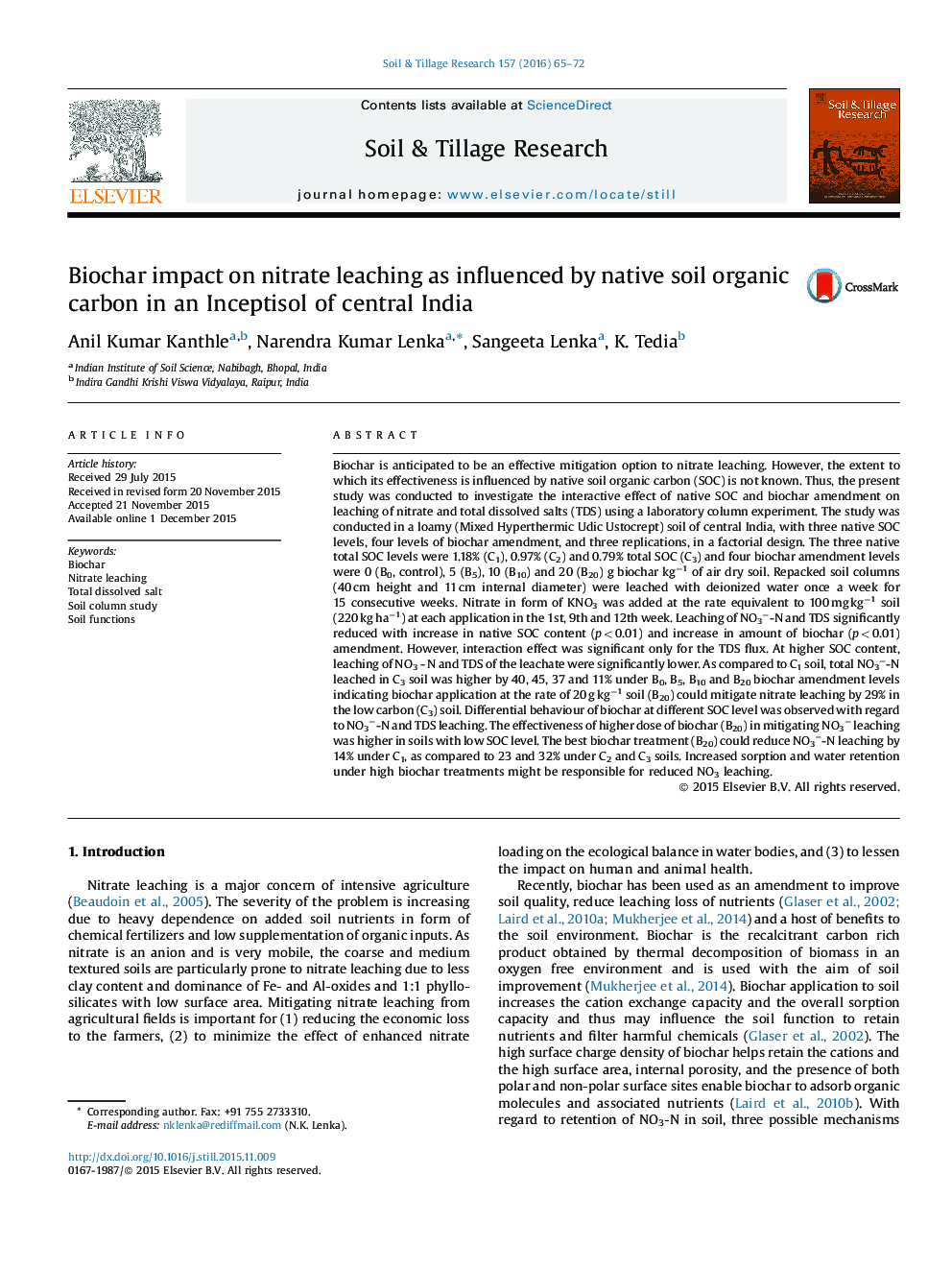| Article ID | Journal | Published Year | Pages | File Type |
|---|---|---|---|---|
| 305555 | Soil and Tillage Research | 2016 | 8 Pages |
•Nitrate leaching significantly decreased with increase in soil organic carbon (SOC).•Significant reduction of nitrate leaching with increase in biochar application.•No interactive effect of SOC and biochar could be observed.•Nitrate leaching mitigation potential of biochar was highest in soil with low SOC.•Biochar at 20 g kg−1 soil could mitigate nitrate leaching by 29% in low carbon soil.
Biochar is anticipated to be an effective mitigation option to nitrate leaching. However, the extent to which its effectiveness is influenced by native soil organic carbon (SOC) is not known. Thus, the present study was conducted to investigate the interactive effect of native SOC and biochar amendment on leaching of nitrate and total dissolved salts (TDS) using a laboratory column experiment. The study was conducted in a loamy (Mixed Hyperthermic Udic Ustocrept) soil of central India, with three native SOC levels, four levels of biochar amendment, and three replications, in a factorial design. The three native total SOC levels were 1.18% (C1), 0.97% (C2) and 0.79% total SOC (C3) and four biochar amendment levels were 0 (B0, control), 5 (B5), 10 (B10) and 20 (B20) g biochar kg−1 of air dry soil. Repacked soil columns (40 cm height and 11 cm internal diameter) were leached with deionized water once a week for 15 consecutive weeks. Nitrate in form of KNO3 was added at the rate equivalent to 100 mg kg−1 soil (220 kg ha−1) at each application in the 1st, 9th and 12th week. Leaching of NO3−-N and TDS significantly reduced with increase in native SOC content (p < 0.01) and increase in amount of biochar (p < 0.01) amendment. However, interaction effect was significant only for the TDS flux. At higher SOC content, leaching of NO3 - N and TDS of the leachate were significantly lower. As compared to C1 soil, total NO3−-N leached in C3 soil was higher by 40, 45, 37 and 11% under B0, B5, B10 and B20 biochar amendment levels indicating biochar application at the rate of 20 g kg−1 soil (B20) could mitigate nitrate leaching by 29% in the low carbon (C3) soil. Differential behaviour of biochar at different SOC level was observed with regard to NO3−-N and TDS leaching. The effectiveness of higher dose of biochar (B20) in mitigating NO3− leaching was higher in soils with low SOC level. The best biochar treatment (B20) could reduce NO3−-N leaching by 14% under C1, as compared to 23 and 32% under C2 and C3 soils. Increased sorption and water retention under high biochar treatments might be responsible for reduced NO3 leaching.
